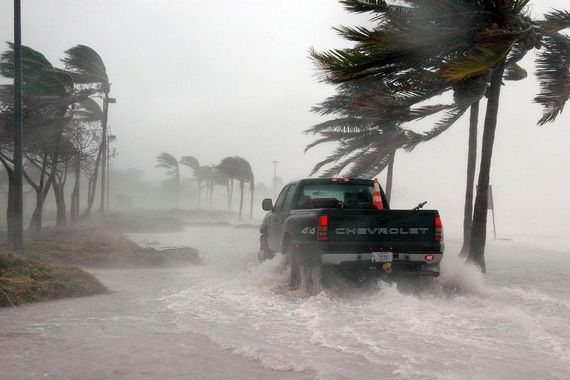This Year's Atlantic Hurricanes in Perspective
Posted on: Thursday, September 28, 2017 CommentsThe recent spate of hurricanes has inevitably attracted attention and spawned wildly inaccurate headlines, such as "a 1000 year event", "the most powerful Atlantic storm on record", "storm of the century", and even "most deadly storm in history".
Many climate scientists have also jumped on the bandwagon, to claim that these storms have been exacerbated by climate change.
With Hurricane Maria now weakening and heading north into cooler waters, it is perhaps time to take a rational look at what has actually been happening.
Let’s have a look at the two most notable storms:

Hurricane Harvey
When Harvey made landfall at the Texas coast on Aug 25th, it ended the longest period without a major hurricane making landfall in the US on record. The previous one had been Hurricane Wilma in 2005.
With winds of 130mph, Harvey was not an unusual storm in any sense, and Texas is often on the receiving end of major hurricanes (defined as Cat 3 and over). There is usually at least one every decade, but prior to Harvey, the last one had been Gilbert in 1988.
However, what made Harvey so catastrophic was that the storm stalled close to Houston for five days, thus dragging in large amounts of moisture from the Gulf, and dumping it all in a relatively small area. In the end, the area around Houston received up to 51 inches of rain in six days.
This stalling of storms, caused by weather blocking patterns, is not unusual and can be explained by perfectly natural meteorological reasons. For instance, in 1978 Tropical Storm Amelia dropped 48 inches of rain in four days on Medina in Texas.
It has been claimed that warmer ocean temperatures had increased the intensity of rainfall from Harvey, but Texas has seen far worse in the past. During Tropical Storm Claudette in 1979, an incredible 43 inches of rain fell on Alvin in Texas, still a record for the US as a whole.
What made Harvey so damaging was that the rain fell on and around Houston, which has a history of notorious and catastrophic flooding, since it was founded in 1836. The reason is the topology, with the city established at the confluence of the Buffalo and White Oak Bayous, and in the middle of very flat, low-lying country.
Hurricane Irma
It has been widely, but wrongly, reported that Irma was the "most powerful Atlantic storm on record".
Irma had 1-minute sustained wind speeds of 185mph, but there have been three other Atlantic hurricanes since 1980 alone, which has been at least as strong - Allen, Gilbert, and Wilma in 1980, 1988 and 2005 respectively. Allen was even more powerful, with winds of 190mph.
None of these storms were anywhere near as damaging as the Labor Day Hurricane, which devastated Florida in 1985 with winds of 185mph. This was because the others reached full strength out over the ocean and well away from land.
And here lies the problem in trying to compare today’s hurricanes with those of the past. We have only had comprehensive monitoring of hurricanes in the Atlantic by satellites since around 1980.
Prior to that hurricane hunter aircraft began coverage in 1944, but in the early decades did not enter the eyewalls of the strongest storms, for understandable reasons! Consequently, the strength of storms in those times tended to be underestimated. Even then they only provided coverage over about half of the ocean.
It is therefore not possible to say whether there were other storms in the past as powerful as Irma.
2017 Atlantic Hurricane Season
So far this year, there have been four major hurricanes, Harvey, Irma, Jose, and Maria. How unusual is this?
Well, as it turns out, not unusual at all. According to NOAA’s Hurricane Research Division, there have been 26 other years with four or more.
The record year was 1950, which had as many as eight. Prior to the deployment of hurricane hunter aircraft, there have been numerous storms missed entirely.
As can be seen, there is no evidence that major hurricanes are becoming more common either. The dip around the 1970s and 80s corresponds with the cold phase of the Atlantic Multidecadal Oscillation (AMO). It is well established that the AMO affects the intensity of hurricanes in this way. According to NOAA, during warm phases of the AMO, the numbers of tropical storms that mature into severe hurricanes is much greater than during cool phases.
Read more at: Not a lot of People Know That
Source: Not a lot of People Know That
Add Comment
If you already have an account, please LOGIN.
If not, you may consider creating on. It’s FREE!
» Login
» Sign up